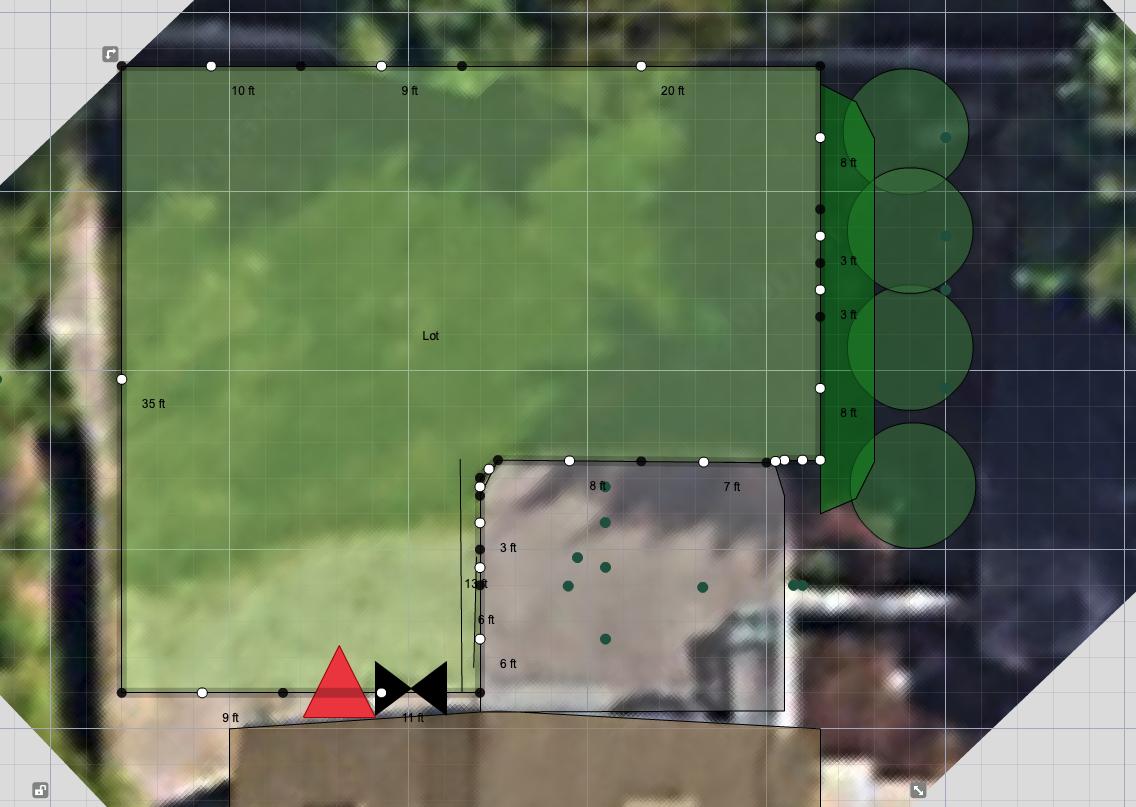I’m having my backyard dug up and regraded next week in order to install sod and so I figured I’d try and take a stab at designing and maybe installing an irrigation system as the area is not very large. I know there’s a lot here, but any guidance would be greatly appreciated. Here’s what I’ve gathered so far:
I’m in the Massachusetts so I will need to take this into account in terms of winterizing the system. There is generally good drainage and it is mostly sandy although with some areas of clay. We will also have a layer of top soil put in with the sod.
The supply line is 1 1/4” galvanized.
I’m not sure on the water meter size, but I think it’s 5/8” per the below image. I’d call my local water and sewer department, but they have been closed since March due to COVID.
My flow rate is a bit difficult to measure because the spigot is really close to the ground. I tried through a 50 foot 5/8” hose into a 6 gallon container and that took almost exactly 1 minute. Measuring with a 1 gallon bottle direct I got about 7-8 GPM, but it’s difficult to measure with that small of a container.
My pressure seems to come in fairly consistently at about 84 PSI, but my vacuum breaker is slightly leaking. Measuring from another spigot I was getting 90-96 PSI (although it’s much closer to the supply line, but they both stem off from the same line which is a 1/2” pipe, that comes directly out of the water meter, into a 3/8” pipe). I know this is high - I’ll come back to this in my questions at the end.
I believe modern frost free spigots like this should also have backflow prevention so I don’t think I need to install anything additional for that (provided I fix the vacuum breaker or washer or whatever it ends up being)?
I used the Orbitz online design tool to build a layout of my property. I’m not particularly tied to using Orbitz products and am certainly open to suggestions, but I appreciate the ease of use of this tool and them telling me pretty much exactly what to buy.
Here is the layout I’m working with
The red triangle is where the water connection is. There is also an outdoor plug right there. The deeper green area on the right side is hedge where there are mostly hydrangeas. The property will be graded such that the top of the picture will be the lowest point. The property is surrounded by a 5’ fence, trees, the house and a garage so wind is not a significant concern.
For this plan the Orbitz service only allowed me to enter a max supply line size of 1” and PSI of 75. I conservatively went with 7 GPM for flow rate.
Here is the resulting suggestion (I didn’t add a manifold - see questions below)
Questions:
- Do I need a pressure regulator? Is there something I can install in-line without requiring plumbing work and also that does not affect my GPM?
- Do I need auto-drain valves? I’m guessing these would be installed where the two sprinklers at the top of the plan image are? Maybe it’s just easier to blow out the system with an air compressor before each winter?
- How deep should I be burying the system? Is there a trick to making sure it gradually slopes down?
- Is there an easy way to tap into the system to also water a couple of potted plants?
- Do I need a manifold and do I need the suggested controller? If so it seems like this project gets a bit more complex. I’ve done plenty of electrical work inside my house, but nothing outdoors beyond nest doorbells). I’m guessing I can ditch the controller and go with a more basic water timer like the Netro Pixie. Or maybe it’s not so bad considering I have an easily accessible outdoor outlet? What would I use to connect the spigot to the manifold? Alternatively are there any plug-in smart manifolds with more than one zone that just attach directly to the spigot?
- Do I need to install anything additional for backflow prevention?
- Anything else I should know or consider?






